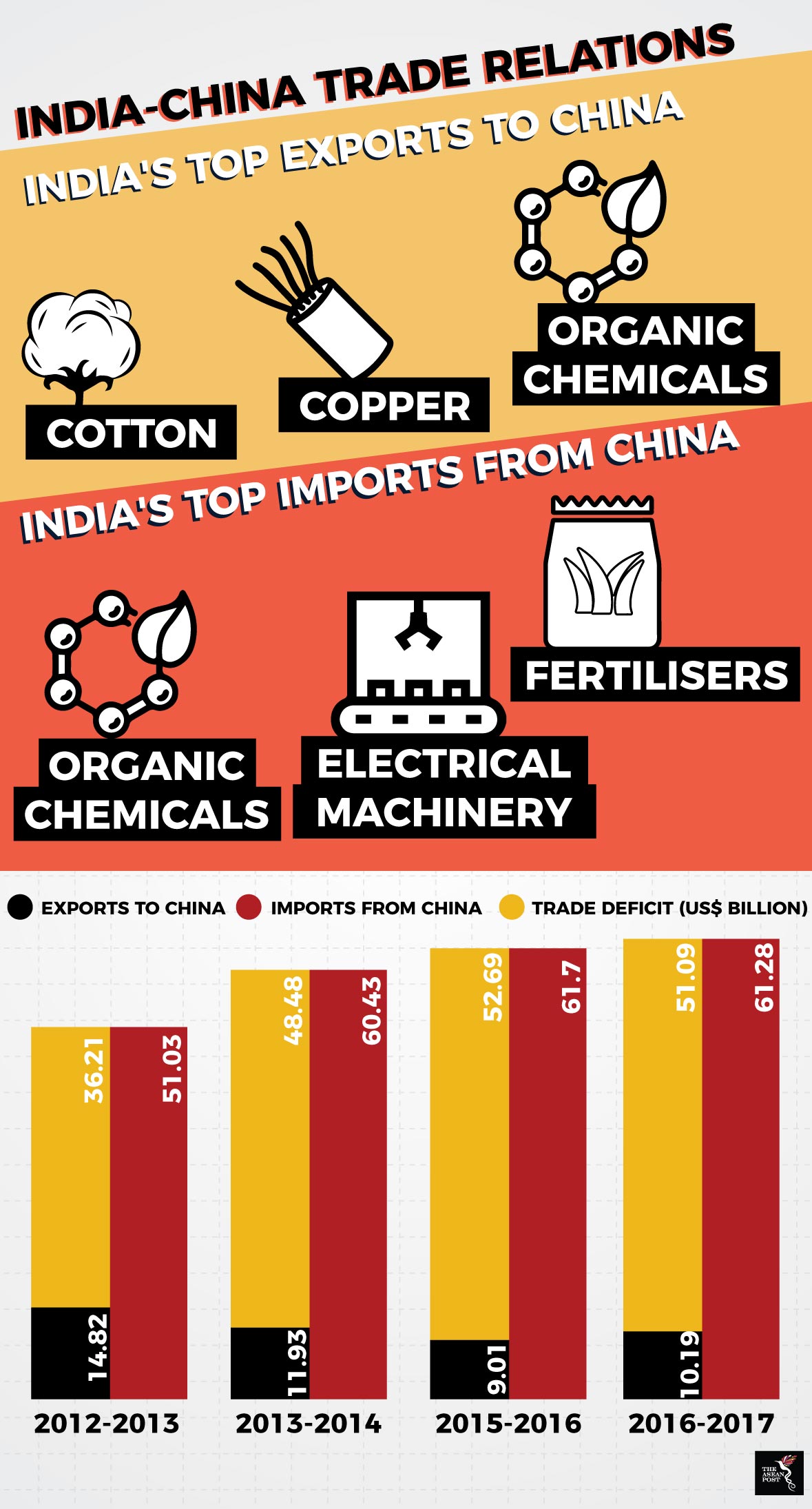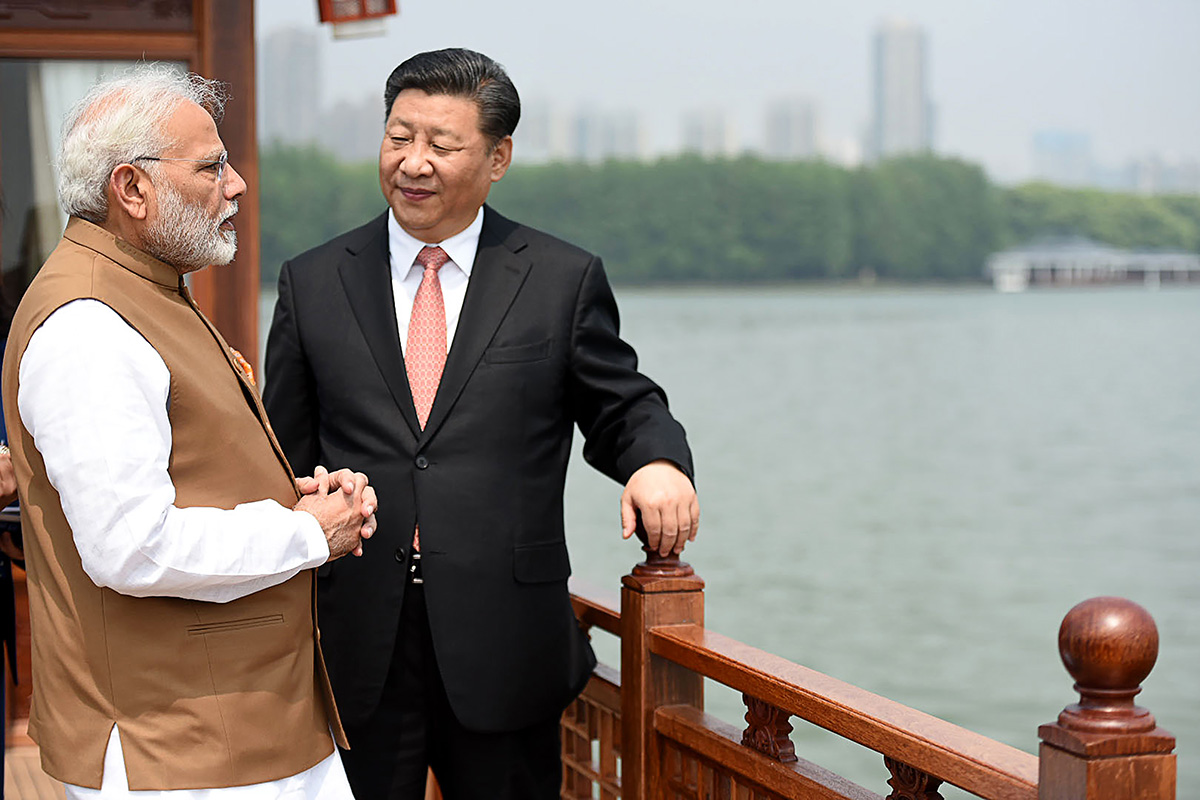The relationship between India and China over the past two years has not been very smooth. The two countries have not seen eye-to-eye on several major issues. These issues range from China’s growing influence over the region through its infrastructure projects such as the Belt and Road Initiative, border disputes and more.
When China launched its ambitious BRI project last year with various heads of state in attendance, India decided to boycott the event by not attending. India’s boycott of the event probably stems from China’s plans in Pakistan to establish a China-Pakistan Corridor. Aside from fears of China penetrating India’s sphere of influence in South Asia, India also does not want China to give legitimacy to Pakistan’s claims over Kashmir.
The culmination of the tension between these two countries was seen early last year during the Doklam standoff. The standoff began when China extended the construction of a road in Doklam, Bhutan – a territory claimed by both, China and India’s top ally, Bhutan. Later, around 270 Indian troops, with weapons and two bulldozers, entered Doklam to stop the Chinese troops from constructing the road.
However, pictures of Indian prime minister, Narendra Modi with Chinese president, Xi Jinping from their latest summit indicates that tensions between the two have simmered. The two recently met in Wuhan in Central China. According to local media reports, Narendra Modi requested to have the summit there rather than in Beijing. This lends itself to the fact that both countries have insisted that this meeting is an “informal one”. The idea behind having an informal summit between the two leaders was so that there was no set agenda and both could talk freely about issues that concerns them.

Recounting what happened in the summit to journalists, China’s ambassador to India, Luo Zhaohui said that the leaders met for nine hours through seven sessions, four of which were one-on-one sessions. While the meetings were behind closed doors, Zhaohui mentioned that among the issues discussed was India’s large trade gap with China.
China is India’s largest trading partner, while India is China’s 13th largest trading partner. According to data from India’s commerce ministry, its trade deficit with China increased more than two-fold from US$16 billion in 2007 to US$51 billion in 2017. During the summit, India asked for China to open up its markets to Indian sugar, pharmaceutical products and non-basmati rice so that India could reduce its trade deficit. As a result of the discussions, China has exempted import tariffs for 28 drugs from 1 May. Zhaohui also said that Xi Jinping will discuss with relevant ministries to seek ways for China to import more from India.
A renewed relationship between both nations could be extremely beneficial if things go well. For China, it maintains access to a massive market amid a trade war with the US. Gaining India as an ally also improves its position over the region. India previously has been courted by the United States to join the Quadrilateral Security Dialogue also known as “the Quad” which involves Australia and Japan as well. The Quad is often seen as a strategic alliance to counter China’s influence.
Perhaps Modi has realised that increased antagonization would do more harm than good. Furthermore, the US under Trump has proven to be an unreliable ally for India. It’s protectionist economic outlook and Trump’s unpredictability makes relying solely on the US incredibly risky.
New possibilities are also on the horizon. China in the past has been open to changing the name China Pakistan Economic Corridor that India opposes if India joins the BRI. Meanwhile, India could benefit greatly if it could join the BRI on its own terms.
As two of the biggest markets in the region rehabilitate their relationship, the world could see a shift in how global politics is governed. Asian countries have proven recently with the Korean summit, that they no longer need large western powers to negotiate on their behalf or to be a mediator. Increased diplomacy and cooperation between Asian countries will bring nothing but benefits for citizens on the continent.
